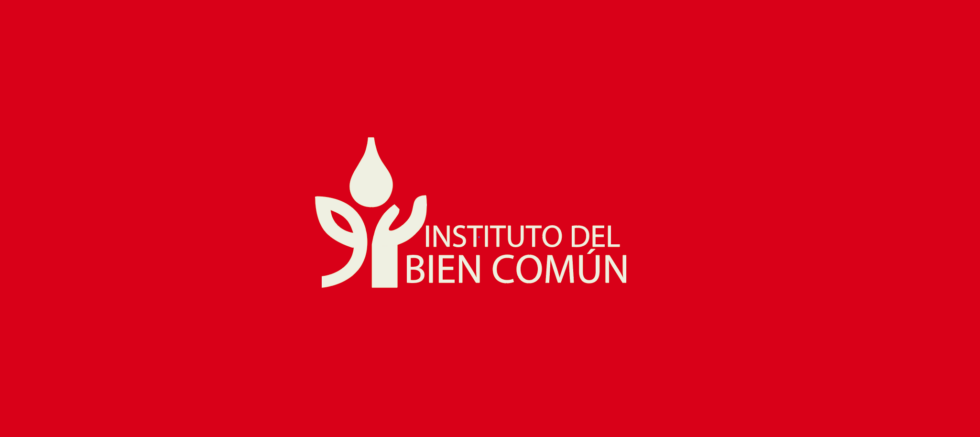Call for proposals
The Instituto del Bien Común (IBC) is looking to hire an evaluation expert or consulting firm with experience in issues related to climate change, forests, and indigenous peoples, preferably based in the Amazon Basin. The expert(s) will conduct an evaluation for the Midterm Review of the Project “Indigenous knowledge and science unite to reduce carbon forest loss in the Amazon”, which is implemented by a consortium of civil society organizations and funded by NORAD – NICFI.
Please find below the relevant Terms of Reference:
Terms of Reference for Mid-Term Evaluation – IBC, EcoCiencia, GAIA, ISA, COICA, and WCRC
Norad Grant reference #: SAM-2027 SAM-21/0004
NICFI Midterm Review
2021-2025 civil society grant period.
- Background
The Instituto del Bien Común (IBC) and their partners, organized in a consortium, were awarded a 5-year grant of 23 million NOK by NICFI – NORAD to be implemented between 2021 and 2025. The objective of this grant is to work toward scaling up local actions against deforestation and forest degradation in indigenous territories of the Pan Amazon.
The Project, “Indigenous Knowledge and Science Unite to Reduce Carbon Forest Loss in The Amazon” , is being implemented by the Consortium, which includes four members from the Amazon Network for Georeferenced Socio-environmental Information – RAISG: IBC (Peru), EcoCiencia (Ecuador), GAIA Amazonas (Colombia), and Instituto Socioambiental – ISA (Brasil); the Coordinating Body for Indigenous Organizations of the Amazon Basin (COICA); and the Woodwell Climate Research Center (WCRC).
Since it was formed, this Consortium has worked diligently to demonstrate and communicate to a global audience the importance of the sound land management practices that Amazonian indigenous peoples carry out in their territories as well as the robust policies supported by various levels of Amazonian government across their protected area networks for the conservation of Amazonian forests.
With the current NICFI project, the Consortium is analysing scientific and technical data on biomass change to enhance public knowledge on the causes and consequences of the deforestation and degradation of forests in the Amazon, while developing near-term strategies for reducing the threats and pressures on this biome in pilot areas. Furthermore, the project aims to increase awareness on the key role indigenous territories and protected areas play in safeguarding the Amazon Forest.
The Project has four main outcomes:
Outcome 1: Improved ability to detect, track and predict forest carbon losses in indigenous territories, natural protected areas, and in the Amazon.
Outcome 2. Implementation of locally specific strategies to combat forest carbon emissions (deforestation and degradation) in Pilot Action Landscapes (PAL).
Outcome 3. Increased public awareness among authorities from the Amazon countries, decision makers from global level centres of power, and public opinion about the role indigenous territories and protected natural areas play in protecting stocks of forest carbon.
Outcome 4. Improved public policies and legal protections for indigenous territories and natural protected areas in the Pan Amazon.
As part of outcomes 1 and 2, the Consortium organizations” technical teams will generate information on the state of forest carbon reserves in the Amazon, that Will contribute to the PALs set in Colombia, Ecuador, Brasil and Peru with indigenous communities for improved forest management. With this information, as part of the implementation of outcomes 3 and 4, communication and advocacy strategies have been developed to disseminate the technical information gathered and analysed by the Consortium and our local indigenous partners.
This midterm review will provide an external view and analysis of the project implementation from the start of the project in September 2021 until June 2023, and it will provide the consortium with valuable input on project progress, potentially as a basis for steering the course towards greater project achievement where applicable.
- Objectives of the review
It is key for the success of the project to identify and analyse if the project main objectives continue to be relevant and, if so, these will be achieved by the end date of the project. The review should aim to provide IBC and the Consortium with valuable input on project progress, as well as an analysis that allows to strengthen its implementation and increases efficiency and effectiveness toward the expected results.
Furthermore, this midterm review would provide the Consortium and Norad the opportunity to understand how the project contributes to NICFI Outcomes and Areas of Strategic Interest (see Annex I). Additionally, the midterm review is a requirement according to the contract signed between Norad and IBC.
- Review questions
- Effectiveness:
- To what extent is the agreement successful in achieving desired results? Please provide a separate assessment according to each project-level outcome found in the results framework.
- In terms of internal, project adjustments, if any, what concrete recommendations do you propose to the organisation for the remainder of the project cycle?
- If there has been changes in relation to enabling conditions, to what extent has the organisation adjusted its approach to meet these?
- To what extent can the project experience be meaningfully replicated and scaled up in similar context? If so, what would be the added value? Please elaborate.
- Are there planned activities that have not been initiated yet, and if so, why?
- Coherence:
- Internal coherence: To what extent does the grant recipient work with or in coordination with other initiatives funded by NICFI? What are the learning points?
- External coherence: To what degree does the grant recipient seek to create alliances and foster synergies with civil society organisations and other partners, national or international, to ensure harmonisation of interventions in the given contexts?
- Specific Questions I – contribution to NICFI Outcomes
- Approved and implemented policies for sustainable forest and land use in tropical forest countries and jurisdictions:
- How does the agreement contribute to raising the ambition for reduced emissions and the absorption of greenhouse gases in:
- Approved and implemented policies for sustainable forest and land use in tropical forest countries and jurisdictions:
(1) the Nationally Determined Contributions (NDCs) and
(2) in regional/state/province-level development strategies?
- How does the agreement contribute to protecting tropical forests and other carbon sequestration ecosystems through regulation, legislation, and area management?
- How does the agreement contribute to:
(1) ensuring implementation of forest conservation within specific sectoral policies, and
(2) integrating forest conservation as cross-sectoral issue in governmental policies?
- How does the agreement lead to implementation of national or state/regional/provincial level area planning policies that promote forest-friendly rural development?
- Improved rights and livelihoods for indigenous peoples and local communities in tropical forest countries:
- How does the agreement lead to the protection of the forest and land rights of IPLCs? Relevant activities may include:
(1) participation in relevant processes,
(2) reports to relevant international legal mechanisms and instruments and
(3) the exercise of free, prior, and informed consent (FPIC).
- Please provide concrete examples.
- To what degree does the agreement contribute to integrating sustainable forest use by IPLCs into legal frameworks, area plans, and development strategies? Please provide concrete examples.
- How does the agreement contribute to the protection of environmental and indigenous defenders and representatives by working for the adoption (and enforcement of) relevant laws and legal instruments? Please provide concrete examples.
- How does the agreement strengthen IPLC capacities for sustainable management and livelihood activities? Please provide concrete examples where applicable.
- Increased transparency in land management, land use, value chains and financing:
- How does the agreement contribute to:
(1) more precise estimates of deforestation and forest degradation and
(2) more frequent use of such data?
- How does the agreement make data about land rights, user rights or concessions in forest areas:
(1) more accessible and
(2) more widely used?
- Mobilising Ambition for Forest-Friendly Policies:
- How does the agreement lead to increased support of forest protection or restoration among key decision-makers and thought leaders?
- How does the agreement seek to increasing knowledge and raising awareness about the significance of forests for humans and nature, the causes of deforestation, and key solutions in official statements, policy documents, or similar?
- Specific Questions II – contribution to NICFI Areas of Strategic Interest
- How does the agreement spur or employ innovative working methods, context analyses, partnership models, or similar innovations? Please elaborate.
- Scope of the review
- Temporal scope:
For this midterm review, it will be from the start of the project in September 2021 until the review has ended.
It is important to consider that this project is, in many ways, a continuation of a previous NORAD funded project for the 2016-2021 period, with the same Consortium partners. As a result of the previous project, a scientific paper on biomass loss due to deforestation and degradation was published. The current project aims to strengthen the scope of the analysis hand in hand with local indigenous communities in key pilot areas in four Amazon countries.
- Geographic scope:
The project activities will be carried out at a local level in already identified pilot action landscapes (PALs), a regional Amazon level through continuing analysis of biomass loss, and at a national and international level with communication and advocacy activities.
For the purpose of this midterm review, the consultant(s) will visit IBC”s office in Lima, will visit 2 out of the 4 PALs, as well as the offices of at least 2 member organizations of the consortium. The PALs to visit will be those in Ecuador and in Peru.
PAL Peru
Name of landscape: Kakataibo Territory
Location: Peru´s Central Amazon, in the regions of Ucayali and Huanuco
Number of hectares: 15 000 km2
Indigenous peoples or nationalities in the landscape: Kakataibo, Shipibo-Konibo
Natural protected area(s) in the landscape: Cordillera Azul National Park
Other protected area(s): Indigenous Reserve Kakataibo North & South (isolated indigenous peoples – PIACI)
Suggested community to visit: Yamino Native Community (Region: Ucayali, Province: Padre Abad)
PAL implementing organization: Instituto del Bien Común
Organization´s address: Jr. Mayta Cápac N° 1329, Jesús María, Lima – Perú
PAL Ecuador
Name of landscape: Waorani Territory
Location: Napo, Pastaza and Orellana Provinces
Number of hectares: 870 000 km2
Indigenous peoples or nationalities in the landscape: Waorani
Natural protected areas in the landscape: Parque Nacional Yasuni, Franja de Biodiversidad y Vida Suggested communitie(s) to visit: (2 days) Konipade, Meñepade; (3+ days) Toñanpade and Kenaweno PAL implementing organization: Fundación EcoCiencia
Organization´s address: Lizardo García E10-80 y 12 de Octubre, Edificio Alto Aragón. CP: 170517 Quito – Ecuador
- Activity scope:
During the first two years of project implementation, there has been further development on the planning and implementation of Outcomes 1 and 2. Some activities from Outcomes 3 and 4 have been carried out, however, communications and advocacy is where further development will be made from year 3 onward.
- Main users and stakeholders
The midterm review will take into consideration the following stakeholders:
- Main users and direct stakeholders: These are the members of the Consortium itself and NORAD.
- Indirect stakeholders: These are the organizations or groups with which the Consortium will implement or is implementing the project´s activities (i.e. PALs).
- Method
The consultant(s) conducting the midterm review shall have basic knowledge about NORAD in order to assess the project´s contribution to their overarching goals. It is important to note that as a member of the OECD Development Assistance Committee (the DAC), NORAD adheres to internationally recognised evaluation standards of official development assistance (ODA). Through years of experience, exchange, and expert guidance, the DAC has developed a set of six principles for evaluation of development assistance. These criteria, revised in a 2019 summary, are found here: Better Criteria for Better Evaluation. In line with the abovementioned objectives of assessing project progress, Norad seeks to focus on two of the six principles: effectiveness and coherence. Therefore, it is of importance to see recommendations to this specific project in the context of these criteria.
For more information about OECD DAC guidelines and standards, please review:
- OECD DAC Principles for evaluation of Development Assistance http://www.oecd.org/dac/evaluation/50584880.pdf
- The OECD/DAC Evaluation Quality Standards
http://www.oecd.org/dataoecd/55/0/44798177.pdf
As stated, Norad seeks to use the review to understand how the agreement contributes to higher-level objectives, namely NICFI Outcomes and NICFI Areas of Strategic Interest.
The methodology with which the assessment will be carried out will be part of the application made by the consultant(s), including a proposal on the dates the visits to the PALs in Peru and Ecuador will take place.
For the methodology, the consultant(s) shall at least carry out the following activities:
- Desk review: Review of all documents regarding the planning, design, and implementation of the project, as well as relevant information specific to each member of the consortium and NORAD (e.g. strategic documents).
- Interviews: Semi-structured interviews should be carried out with consortium members and key stakeholders of the project to gather information on their experience and perspectives on the project´s implementation and results. To this end, an interview questionnaire should be designed with questions related those prioritized in section 3 of these ToR. Interviews will be carried out in person and/or through an online platform when needed.
- Field visits: For the field visits, we recommend -in addition to interviews- the development of a short workshop methodology or a focus group approach in which more than one representative from the PAL or Consortium can take part. Similarly, the focus group could be carried out among all Consortium members.
IBC will facilitate the project´s documentation and the engagement with the Consortium´s organizations.
- Deliverables and timeline
7.1 Deliverables:
The evaluator shall produce a written report that should not surpass 30 pages excluding annexes. The report should include the following information and sections:
- An executive summary
- Background of the project
- Purpose and objectives of the midterm review
- Methodology
- Findings:
- Analysis of outputs to date versus planned activities and products with consideration of any change in the current operating landscape
- Analysis of progress towards achieving outcomes to date
- Analysis of the effectiveness of the partnership of the Consortium
- Analysis of administrative and operational coordination by IBC and within the Consortium
- Conclusions
- Recommendations
- Annex (documents, interviewees, etc.).
Additionally, the consultant(s) shall hold 3 video conference calls to discuss the findings of the evaluation that includes the following:
- 1 call with the Project Coordinators
- 1 over-arching call with the Consortium organizations.
- 1 call with the funding party (NORAD)
The midterm evaluation report must be delivered in both English and Spanish.
7.2 Timeline:
- Monday June 26 th to Friday July 14 th : IBC publishes call for proposals and receives bids
- Monday July 17 th to Wednesday July 19 th : Assessment of bids and selection of
consultant(s). - Friday July 21 st : Start-up meeting with the consultant(s) and provision of documentation.
- Monday July 24 th to Friday August 4 th : Desk review.
- Monday August 7 th to Friday August 25 th : Interviews and travels to specified PALs and Consortium organizations.
- Week of August 28 th : Consultant(s) finishes writing report and sends it to IBC.
- Monday September 11 th to Friday September 22 nd : Consultant(s) holds 3 different calls to present findings, conclusions and recommendations with the Project Coordinators, the Consortium and NORAD.
- Total consulting period: July 17 th to September 22nd, 2023 (10 weeks).
Point of contact:
- Harlem Mariño Saavedra – Project Coordinator – [email protected]
- Application:
Interested parties should submit their proposal by email to [email protected], indicating in the subject “NORAD Project Midterm Review” until Friday July 7th, 2023. Applications should include the following:
- Letter of interest and presentation, including previous relevant work.
- Work plan, including proposed approach, methodology and index page.
- CV(s).
- Budget proposal.
Required/preferred qualifications for the contract:
- At least 3 relevant evaluations in the last five years.
- Significant knowledge and experience of evaluation concept and approaches (for example including mixed methods, Theory of Change, OECD evaluation criteria).
- Previous experience interacting with leaders of indigenous organizations, expertise with climate change and land use change.
- Excellent writing and verbal skills in English and Spanish.
- Knowledge about the Amazon region, especially of project countries.
- Knowledge of Portuguese, desirable.
- Availability to travel.
- Payment terms:
- Up to USD 15,000.00, all expenses included. Offers may be considered according to experience.
- 40% at the signing of contract.
- 40% after receipt of the draft evaluation report.
- 20% after receipt of final evaluation report and presentation of main findings.








CONVOCATORIA PARA CONSULTOR(A) LEGAL Proyecto “Science/Indigenous Knowledge Unite to Reduce Forest...